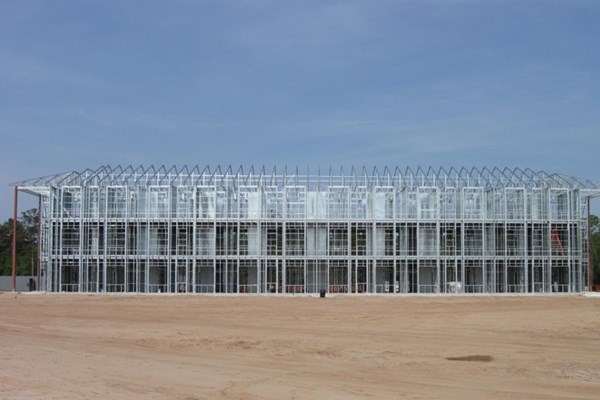
Framing a building requires a decision as to whether the wall studs will be wood or metal. The choice of one over the other is often a decision based on fulfilling the needs of the construction project within budget. In the past, wood was the preferred choice of material for framing studs. While that is still true in residential construction, at least 40% of commercial buildings today involve the use of steel studs.
The growing popularity of metal studs can be attributed to the following reasons:
Steel Studs - Their Advantages Over Wood Outweigh the Slightly Higher Cost
Depending upon whom you consult, pricing for steel studs is generally considered to be slightly higher than wood. Wood prices fluctuate and the overall price difference compared to steel varies, but steel studs typically cost 3% to 15% more than wood.
At Cleveland Construction, we feel the following key advantages of steel studs over wood more than compensate for the slightly higher upfront price.
Steel Offers Greater Stability in Pricing
The frequent fluctuation in lumber pricing presents uncertainty when budgeting material costs on a project. However, the cost of metal framing has remained relatively steady. It is important to note that changes in tariffs have already been rolled into current pricing for steel. Even with that pricing adjustment, most experts consider steel studs as being cost-competitive with wood after all of the added benefits are taken into consideration.
Non-Combustible Steel Framing Allows for Lower Insurance Premiums
Steel framing is not flammable, so developers and owners are attracted to the lower insurance premiums during and after construction.
Settling Is Minimized
Wood, being a natural product, is subject to shrinking, warping, and splitting. These can cause settling issues in a building. Steel is not going to be affected by any of these issues.
Maintenance Costs of Steel-Framed Buildings Can Be Lower
Wood framing can be subject to rot and moisture infiltration. Aging wood-framed structures could suffer insect damage and have to be replaced over time. While metal framing has the potential for rust in similar conditions, the overall maintenance costs of steel framing are going to be less than the wood-alternative.
Steel Has Become Green
It may be surprising to know that most steel is at least 25% recycled. All steel is 100% recyclable. It also does not emit the Volatile Organic Compounds (VOCs) found in wood preservatives, which is not recyclable.
Steel-Framed Buildings Are More Durable Against the Elements
There is a reason that buildings in hurricane zones are constructed using steel framing – steel-framed buildings withstand the high winds better than those of wood-framed buildings. This is also true in durability tests associated with earthquakes and heavy snow.
Here's a side-by-side comparison of the benefits of wood characteristics versus steel.
In the final analysis, while initial estimates comparing framing costs of wood versus steel may indicate that wood is less expensive, the advantages of steel framing make it the preferred choice of an increasing number of builders and building owners.
We can help you decide which framing method is right for your next project.
Contact our preconstruction team to begin. We've helped our clients choose the right structure system based on their project's budget and objectives - and we want your project to be next.*